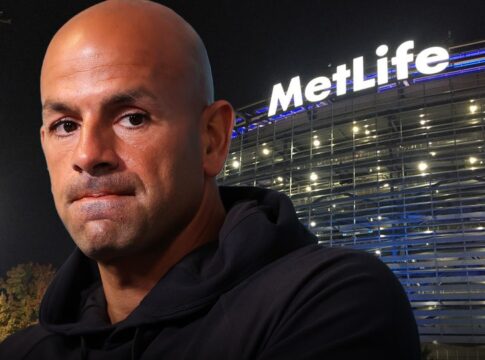The paradox of running a campaign against Donald Trump is that you have to convince voters that he is both a liar and deadly serious.
On the one hand, much of what the Republican presidential nominee says is patently false. Haitian immigrants in Springfield, Ohio, are not eating cats and dogs; President Joe Biden is not dodging calls from the governor of hurricane-stricken Georgia; crime is not, in fact, on the rise.
And yet, on the other hand, Trump is not bluffing when it comes to his plans to radically shift the federal government and change the fabric of American life. These include a huge expansion in political-patronage jobs, campaigns of retribution against political adversaries, and mass deportation of undocumented immigrants—all things that Trump has placed at the center of his campaign and that he tried to do in his first term. Trump’s critics talk about these plans not just because of an abstract commitment to democracy—it’s also good politics. Many of these ideas are deeply unpopular, and will motivate voters to oppose Trump.
That’s the theory, at least. But Trump exists in a strange zone where voters hear what he’s saying and then largely discount it, perhaps as a result of his past dissembling, or perhaps because the ideas just seem too extreme to be real. Amanda Carpenter, a former GOP staffer turned Trump critic who now works for the nonprofit Protect Democracy, has dubbed this the “believability gap.”
“[These ideas] are out in public. They’re on video. They’re very easy to see and understand,” she told me. “What a lot of people are failing to comprehend is how he would turn that rhetoric into a reality.”
One way to think about the believability gap is to consider Project 2025, the Heritage Foundation–coordinated blueprint for a second Trump term. Such external planning documents are not unusual, I noted in August, and even given that many of the details in this one are far out of the mainstream, Democrats’ success in turning Project 2025 into a campaign liability is surprising. An NBC News poll late last month found that 57 percent of voters viewed Project 2025 negatively; almost all of this group viewed it very negatively. Even a third of Republicans dislike it. A recent survey from the progressive pollster Navigator found 50 percent disapproval and just 9 percent approval for Project 2025.
But the trick is that even though Project 2025 is deeply unpopular, Trump is somewhat immune to the effects if people think he won’t really do the things in it. Lake Research Partners (LRP), a Democratic firm, recently polled swing-state voters about Project 2025. When respondents were asked about specific policies within the document, an important split emerged between how they felt about each idea versus how likely they thought it was to happen. For example, 57 percent were very concerned about cutting programs such as Medicaid, Medicare, and Social Security, but only 33 percent thought that was very likely. Similarly, 46 percent would be very concerned about Trump deploying troops against American citizens, yet only a quarter thought Trump would ever do such a thing—even though Trump showed enthusiasm for doing just that in 2020, including in public statements.
But the believability gap nearly disappears when it comes to two of the most traditional GOP policy priorities. Even though Trump in 2024 is the most aberrant major-party nominee in American history—outdoing even earlier Trump iterations—the LRP polling finds that voters are very concerned about tax cuts for the wealthy and restrictions on abortion, contraception, and infertility treatments and also think Trump would be very likely to implement those policies.
Voters’ dismissal of the likelihood of Trump pursuing his most extreme ideas, Carpenter told me, represents “a failure of imagination and inability to think about how his words could really become operable with the right people around him. It’s sort of unfathomable to a lot of Americans that that’s not exaggerated rhetoric.”
For the Kamala Harris campaign, the believability gap is a challenge: Get people to believe that Trump will pursue the ideas that the public hates. The evidence available to them is substantial. Some of the most extreme ideas in Project 2025, such as liquidating much of the civil service and politicizing the federal government, are things that Trump has already tried to do. As president, he attempted to use the Justice Department to punish political adversaries, closed down investigations into allies, and sought to punish Amazon for negative coverage in The Washington Post, owned by Amazon Executive Chairman Jeff Bezos. (Carpenter has also pointed to actions taken by Republican state governments as proof of what Trump could achieve.)
That helps explain a major shift in Democratic campaign strategy that has become apparent in recent months. When President Joe Biden was the party’s nominee, he frequently spoke about the election as an existential threat to democracy, using high-flown rhetoric. Since replacing him atop the ticket, Vice President Kamala Harris has not stopped talking about democracy, but she’s made it much less of a focus, instead emphasizing issues such as abortion and tax cuts—and, yes, Project 2025. People already hate it. The Harris campaign needs them to believe it.



